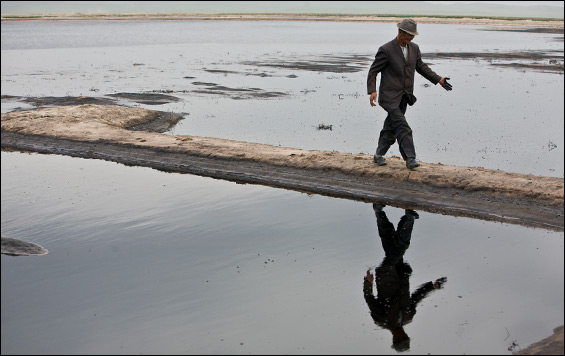The Stream, March 10: The Alberta Tar Sands
Tar sands development in northern Alberta, Canada, causes water pollution, increases greenhouse gas emissions and damages forests, according to a team of independent scientists commissioned to study the impacts of oil operations in the region. The northern Alberta oil sands are the largest source of oil outside the Middle East but are believed by many to be sending toxins such as mercury, arsenic and lead into surrounding watersheds.
The U.S. Environment Protection Agency has asked the Pennsylvania authorities to begin testing the drinking water around the Marcellus Shale for radium. Earlier this month, a series of articles in The New York Times uncovered the hidden risks of shale gas drilling wastewater.
This week, Chinadialogue reports on China’s Xiaonanhai Dam, a controversial hydropower project planned for the upper reaches of the Yangtze River that threatens to destroy the region’s last reserve for rare fish. The scheme has Chinese environmentalists up in arms and calling for a public hearing.
The Great Lakes in the United States and Canada are facing a different threat. The International Joint Commission, a U.S.-Canadian agency, has warned that the rising levels of phosphorus in the lakes are endangering the aquatic life and human health.
This article in Euractiv gives a rundown of the Global Water Footprint Standard, which measures the quantity of water used in the production of goods and services. Is this a useful measure, and why are businesses warming up to the idea but governments aren’t?
The Stream is a daily digest spotting global water trends. To get more water news, follow Circle of Blue on Twitter and sign up for our newsletter.
, a Bulgaria native, is a Chicago-based reporter for Circle of Blue. She co-writes The Stream, a daily digest of international water news trends.
Interests: Europe, China, Environmental Policy, International Security.





Leave a Reply
Want to join the discussion?Feel free to contribute!